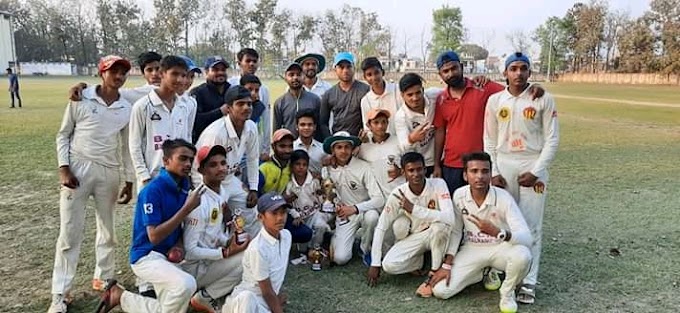 Srinivasa Ramanujan FRS (/ˈsrɪnɪvɑːs rɑːˈmɑːnʊdʒən/;[1] born Srinivasa Ramanujan Aiyangar; 22 December 1887 – 26 April 1920)[2][3] was an Indian mathematician who lived during the British Rule in India. Though he had almost no formal training in pure mathematics, he made substantial contributions to mathematical analysis, number theory, infinite series, and continued fractions, including solutions to mathematical problems then considered unsolvable. Ramanujan initially developed his own mathematical research in isolation: "He tried to interest the leading professional mathematicians in his work, but failed for the most part. What he had to show them was too novel, too unfamiliar, and additionally presented in unusual ways; they could not be bothered".[4] Seeking mathematicians who could better understand his work, in 1913 he began a postal partnership with the English mathematician G. H. Hardy at the University of Cambridge, England. Recognizing Ramanujan's work as extraordinary, Hardy arranged for him to travel to Cambridge. In his notes, Hardy commented that Ramanujan had produced groundbreaking new theorems, including some that "defeated me completely; I had never seen anything in the least like them before",[5] and some recently proven but highly advanced result independently compiled nearly 3,900 results (mostly identities and equations).[6] Many were completely novel; his original and highly unconventional results, such as the Ramanujan prime, the Ramanujan theta function, partition formulae and mock theta functions, have opened entire new areas of work and inspired a vast amount of further research. Nearly all his claims have now been proven correct. The Ramanujan Journal, a scientific journal, was established to publish work in all areas of mathematics influenced by Ramanujan, and his notebooks—containing summaries of his published and unpublished results—have been analyzed and studied for decades since his death as a source of new mathematical ideas. As late as 2011 and again in 2012, researchers continued to discover that mere comments in his writings about "simple properties" and "similar outputs" for certain findings were themselves profound and subtle number theory results that remained unsuspected until nearly a century after his death. He became one of the youngest Fellows of the Royal Society and only the second Indian member, and the first Indian to be elected a Fellow of Trinity College, Cambridge. Of his original letters, Hardy stated that a single look was enough to show they could only have been written by a mathematician of the highest calibre, comparing Ramanujan to mathematical geniuses such as Euler and Jacobi.
Srinivasa Ramanujan FRS (/ˈsrɪnɪvɑːs rɑːˈmɑːnʊdʒən/;[1] born Srinivasa Ramanujan Aiyangar; 22 December 1887 – 26 April 1920)[2][3] was an Indian mathematician who lived during the British Rule in India. Though he had almost no formal training in pure mathematics, he made substantial contributions to mathematical analysis, number theory, infinite series, and continued fractions, including solutions to mathematical problems then considered unsolvable. Ramanujan initially developed his own mathematical research in isolation: "He tried to interest the leading professional mathematicians in his work, but failed for the most part. What he had to show them was too novel, too unfamiliar, and additionally presented in unusual ways; they could not be bothered".[4] Seeking mathematicians who could better understand his work, in 1913 he began a postal partnership with the English mathematician G. H. Hardy at the University of Cambridge, England. Recognizing Ramanujan's work as extraordinary, Hardy arranged for him to travel to Cambridge. In his notes, Hardy commented that Ramanujan had produced groundbreaking new theorems, including some that "defeated me completely; I had never seen anything in the least like them before",[5] and some recently proven but highly advanced result independently compiled nearly 3,900 results (mostly identities and equations).[6] Many were completely novel; his original and highly unconventional results, such as the Ramanujan prime, the Ramanujan theta function, partition formulae and mock theta functions, have opened entire new areas of work and inspired a vast amount of further research. Nearly all his claims have now been proven correct. The Ramanujan Journal, a scientific journal, was established to publish work in all areas of mathematics influenced by Ramanujan, and his notebooks—containing summaries of his published and unpublished results—have been analyzed and studied for decades since his death as a source of new mathematical ideas. As late as 2011 and again in 2012, researchers continued to discover that mere comments in his writings about "simple properties" and "similar outputs" for certain findings were themselves profound and subtle number theory results that remained unsuspected until nearly a century after his death. He became one of the youngest Fellows of the Royal Society and only the second Indian member, and the first Indian to be elected a Fellow of Trinity College, Cambridge. Of his original letters, Hardy stated that a single look was enough to show they could only have been written by a mathematician of the highest calibre, comparing Ramanujan to mathematical geniuses such as Euler and Jacobi.The Thriving World of Online Gaming in India
The Thriving World of Online Gaming in India Introduction Online gaming has taken the world by storm in recent years, and India is no exception. With a massive population of gamers, a growing tech-savvy youth demographic, and improved internet connectivity, India has emerged as a prominent player in the global online gaming industry. In this article, we'll explore the fascinating world of online gaming in India, its evolution, current trends, challenges, and the future prospects. The Rise of Online Gaming in India India's journey in online gaming can be traced back to the early 2000s when PC gaming and online cafes were the primary means of accessing games. However, the real transformation came with the advent of smartphones and affordable mobile data plans. The availability of smartphones with powerful processors and high-quality displays democratized gaming, making it accessible to people from all walks of life. Mobile Gaming Dominance Mobile gaming has been the driving force...


0 Comments